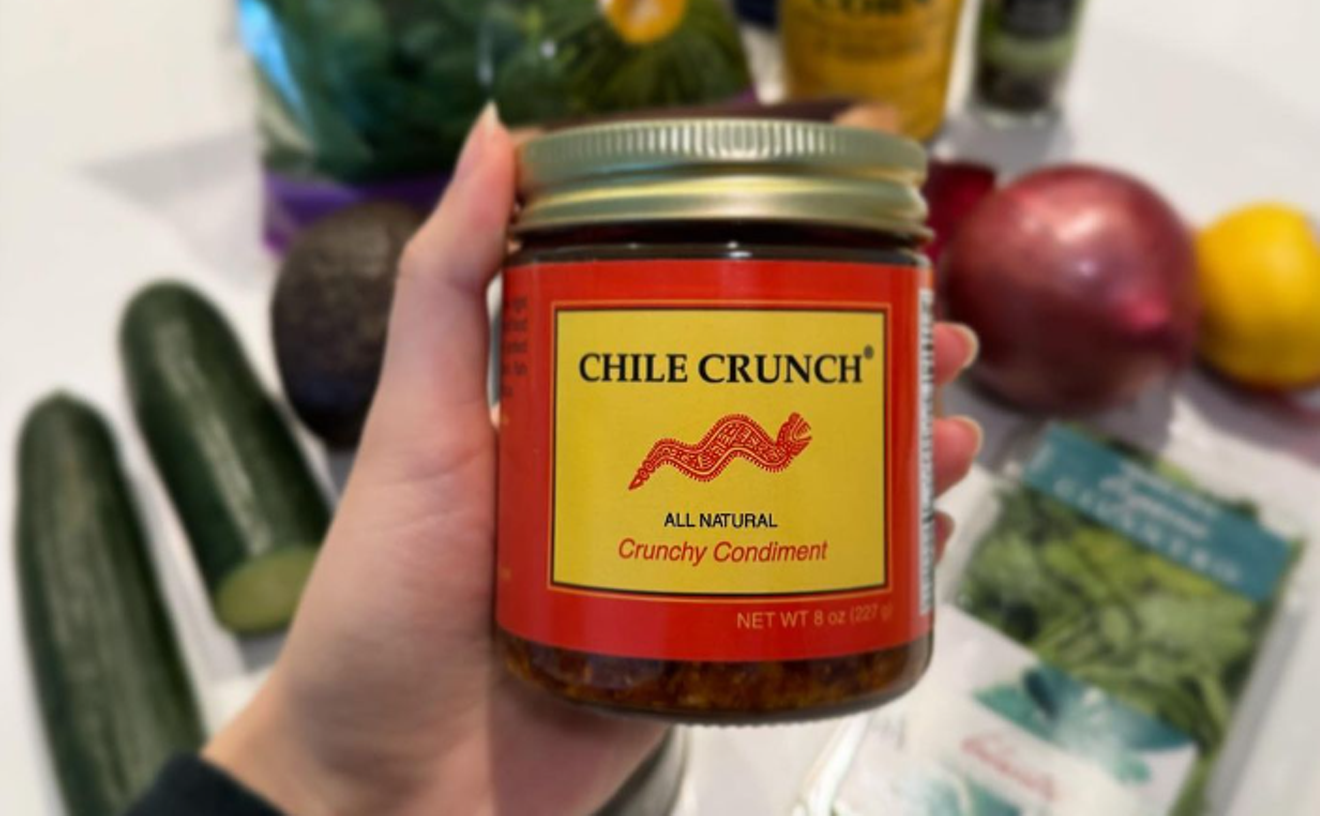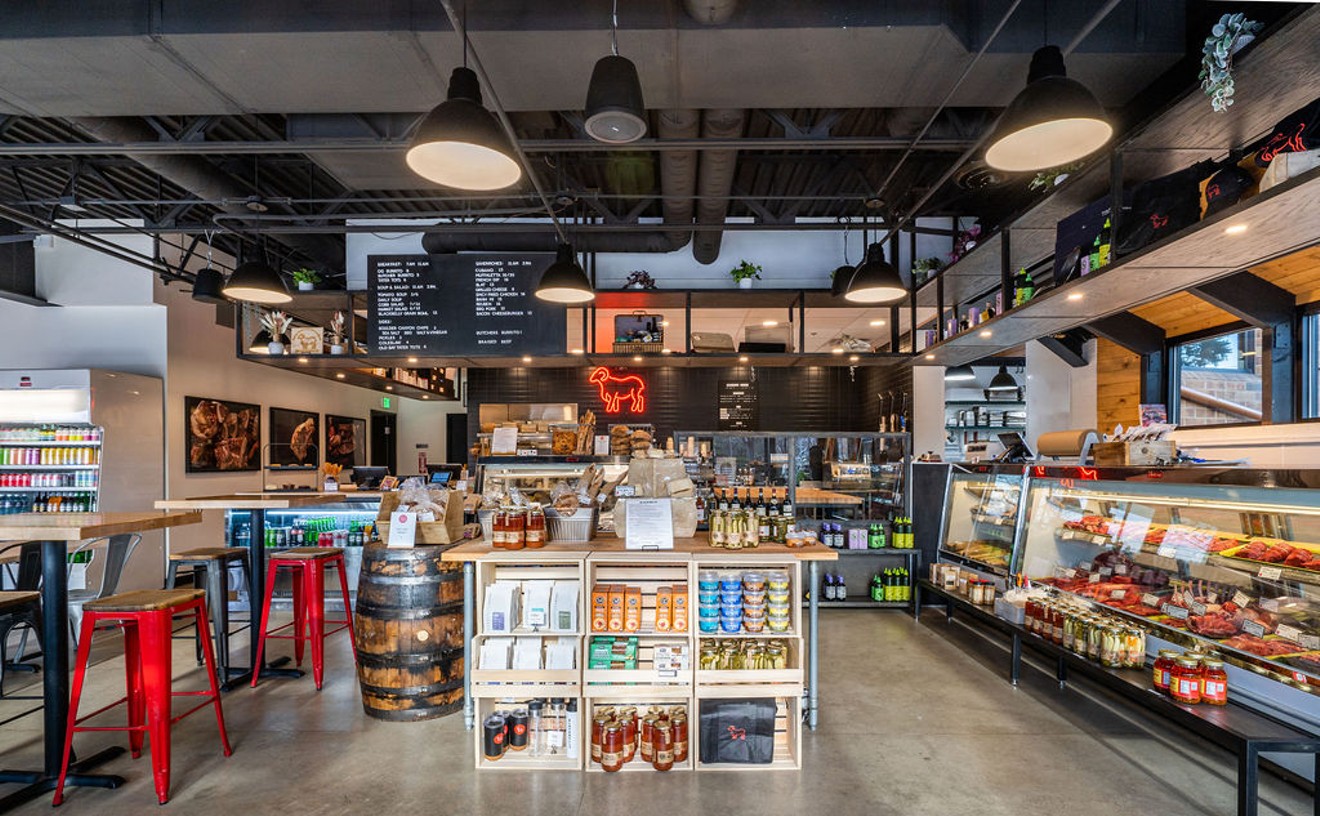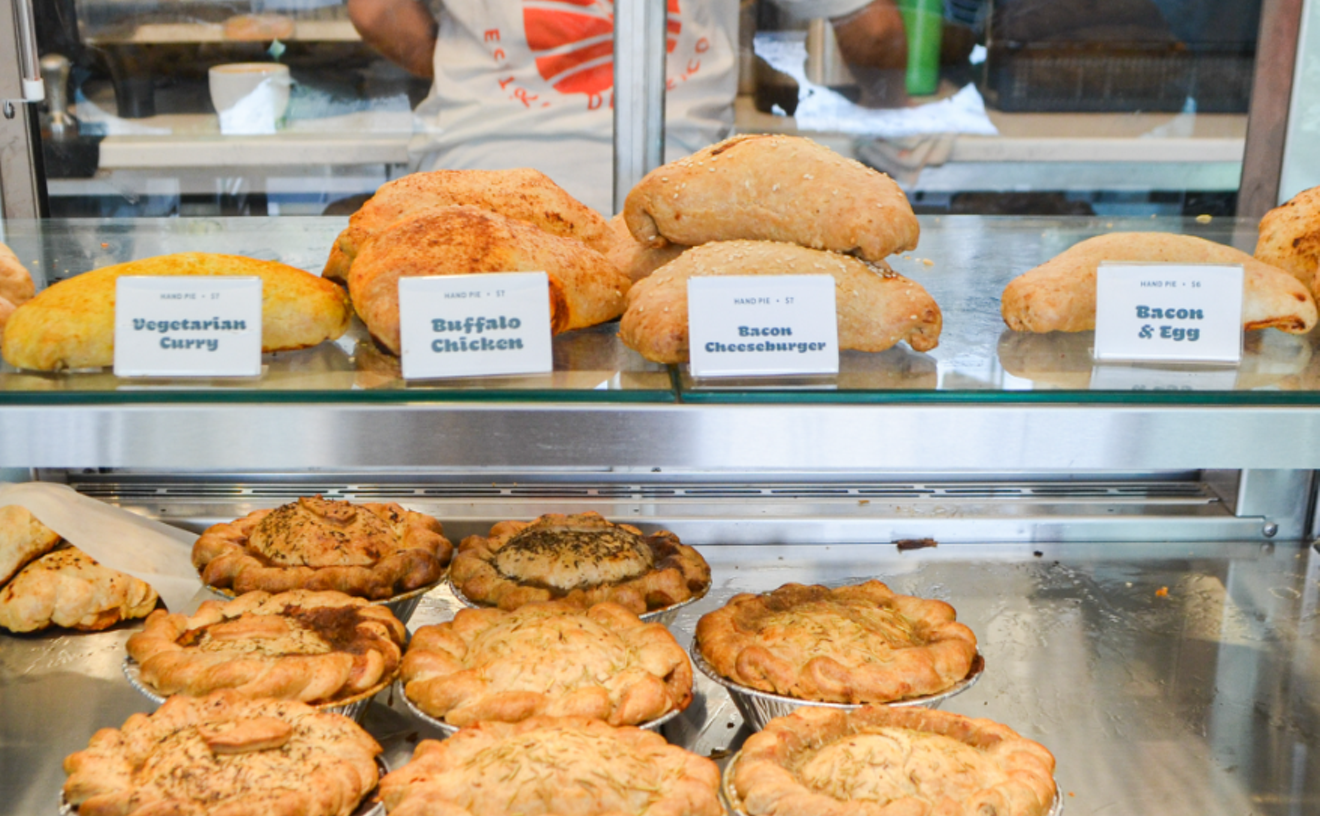If international cuisine is a celebration of this planet's bounty, then Cuban food is the life of the party. At times flashy and flamboyant, at others it's subtle and coy. Simple, but still full of surprises. The kind of mouth guest that starts out quiet and unassuming but turns out to be something you'd like to invite in again and again.
At first, though, I didn't get it. Why were people lining up for two blocks just to get a sandwich? After sampling a few on quick road trips, however, I'd be back in Naples watering my plants or switching stations on my stereo, and suddenly I would just have to get my mouth around a slab of juice-dripping, lime-soaked steak fresh off the grill as soon as possible, and Castro be damned. And after my first visit to the decades-old Calle Ocho Festival, where the lechón asado -- roasted pig -- was so rich, juicy and tender it had to be shoveled in with the hands because a fork merely shredded it, roasting my own pig became a life goal.
Here in Denver, I've found that many people share my passion for Cuban food -- but it's a craving not easily satisfied. If I had a dime for every time someone asked me why this town didn't have a Cuban restaurant, I'd be sipping Cuba libres in Big Havana right now. The thing is, only Cubans can do Cuban food right, so we needed a couple of Miami natives with the right credentials to move here and ask the same question before we finally got our own authentic eatery.
It was worth waiting for. Cuba Cuba, the restaurant brought to us by Kristy Socarras Bigelow, her husband, Brian Bigelow, and her brother, Enrique Socarras, is an unabashed bash.
Six years ago, Kristy came to Colorado to get her master's in social work and play on the slopes, but she wound up falling in love with both the area and a guy and decided to stay. With some help from her native-Denverite husband, she convinced her brother, who'd been cooking in Miami for seven years, that what this place needed was a Cuban restaurant. So the trio bought two side-by-side, pre-1880 dwellings in the Golden Triangle that are among the oldest buildings in the city and, with a lot of work -- Kristy says they had to shoo away the potbellied pigs squatting on the property -- created the space that is Cuba Cuba. (All together now: Kooba Kooba.) One house is now a dining room that looks like a cheerful, much more casual version of the Casablanca set, complete with palm-frond fans and a bright, open-air feel; the other side was transformed into a small bar that features bongos for tables and the constant, friendly presence of Kristy and her bartender, Franklin Buist.
Buist is responsible for the wicked libations that help make Cuba Cuba one big fete. Mojitos, made from rum, fresh mint leaves, a splash of lime and plenty of sugar, get their name from the Cuban slang for "soul," which may also explain why imbibers turn into philosophers after a few swallows -- and believe me, it doesn't take many. So a word of caution: If you're having any "issues" with your fellow mojito drinkers, stop at one. Or opt for a less dangerous concoction, such as the infamous Cuba libre or, even better, a mango mimosa, which pairs just-squeezed mango juice with sparkling wine.
Whatever your drink of choice, chances are you'll have plenty of time to down it. Taking a cue from Bang!, the popular Highland restaurant where Kristy once worked, Cuba Cuba doesn't take reservations, and the times we've dropped in, the place has always been packed. But once you're seated, things flow smoothly -- and time actually starts to fly as you toast one delicious Cuban dish after another.
The recipes are all Enrique's, and many are based on the siblings' childhood meals. "My family came to Miami in 1959," explains Kristy. "My stepdad fought in the Bay of Pigs and spent time in prison, so we were very anti-Fidel. My family wanted to get out of there, but they also did not want us to miss out on the foods that we would have grown up with over there. And so my mother always made the traditional dishes." But Enrique also wanted to experiment with nuevo cubano cooking. While Cuban cuisine has always been based in colonial Spanish cooking, transformed through ingredients brought over by African slaves and Chinese laborers, the nuevo upgrade involves many herbs and spices from other countries, along with more attention to presentation and thicker, French-style sauces.
Cuba Cuba got our mojo working with the ubiquitous mojo, a thin, traditional sauce that worked its garlic-infused, citrus-sparked magic on mariquitas cubanas, plantain chips fried crispy and sweet. Then again, the chips worked just as well scooping up a salsa fresca-like concoction made from avocados, tomatoes and onions. Mojo had also served as the marinade for an appetizer of skewered shrimp (camarones mojao), giving the sweet flesh an extra tang and heightening the fiery spark of a honey-sweetened mustard that crisscrossed the crustaceans. Another standard starter, chicken croquettes (croquetas de pollo are often called Cuba's national appetizer), brought three fat disks coated in golden breadcrumbs, their moist, steamy insides possessing a faint peppery bite.
The ensalada Cuba Cuba seemed a simple mix of avocado wedges with tomatoes and red onions, all drizzled with olive oil and a sherry wine vinegar. But the beauty of this dish, as with so much Cuban food, lay in the details: a perfectly ripe avocado, so soft and yielding that we wanted every bite to stretch forever, paired with sugary, also perfectly ripe pear tomatoes that burst when we bit into them. The olive oil was of such good quality that we could taste its faint nuttiness, and the vinegar had just enough tartness to cut the rich, oily avocado. Another salad, La Floridita, paired shrimp and pineapple, both grilled to show off their sweetness, along with flawless baby greens and a mango vinaigrette so smooth we could see the dining-room lights reflected in it. Eateries that pull off much more complex creations are often unable to deliver dishes this uncomplicated with such precision.
The entrees offered more reason to celebrate. For the Bacardi-painted mahi, a thick chunk of mahi mahi had been lightly spiked with rum; the result was as tender as the mash of boniato -- a white version of the sweet potato that's less sweet and more mealy -- that it rested on. We didn't expect the mojo-marinated steak to be as soft, but we could have cut the tasty beef with a spoon. It came with fries made from yuca, the white-fleshed root of the cassava plant that creates chewier, almost sweet versions of America's favorite deep-fried snack. The mojo-seared chicken breast (pollo a la plancha) sported caramelized onions for sweetness; the grilled chicken breast (pollo al mango) came coated in a barbecue sauce made from mangoes and bourbon that was so sticky-sweet it turned the bird into chicken candy. And, of course, there was Moros y Cristianos, or Moors and Christians, which paired soft black beans with Cuban-style white rice, intentionally on the dry side.
In all of Little Havana, I never found anything as delicious as Cuba Cuba's tres leches, a take on the classic "three milks" cake that explains why God created desserts. Sopping wet, it was loaded with sugar and so comforting to the tastebuds and tummy that we wanted our madres. Although the bananas flambéed in rum and served with vanilla ice cream were fine -- more caramel sauce, please -- and the silky Cuban flan turned custard up a notch, on my next visit to Cuba Cuba, I may have to order tres leches times three.
And then let's party.










